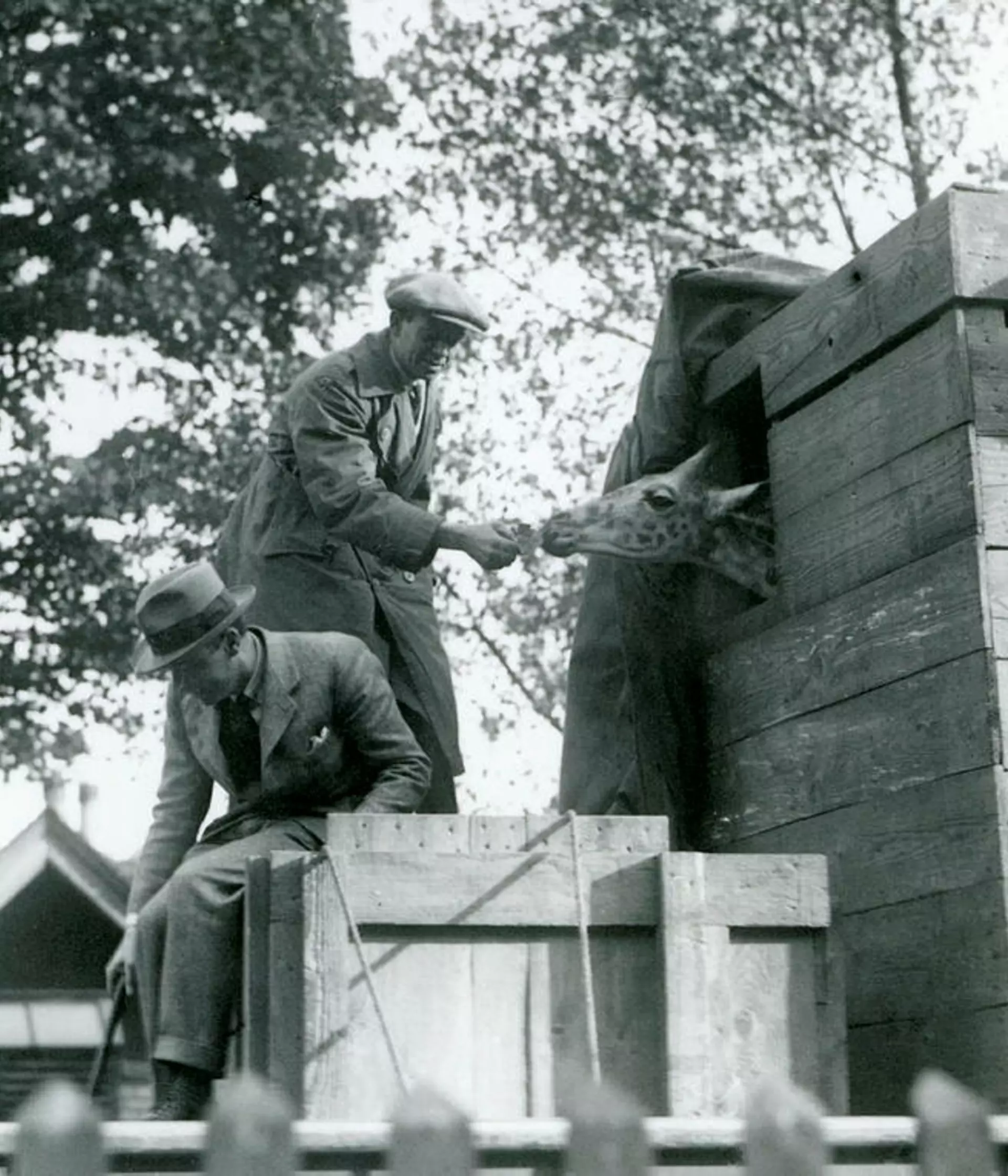London Zoo `officially’ opened on 27 April 1828 and is steeped in history.
The site in Regent’s Park is home to thousands of different species and some truly amazing animals.
World's oldest scientific zoo
Opened in 1828 by ZSL (Zoological Society of London) London Zoo is the world’s oldest scientific zoo and the brainchild of Sir Thomas Stamford Raffles, who was also renowned for founding Singapore.
For almost 20 years only fellows of the Society were allowed to access the Zoo for scientific study, until the doors were opened to the public in 1847 to help funding.
Listed telephone box
There are a number of listed buildings around the ZSL site in Regent’s Park, one of the most peculiar being the traditional telephone box at Penguin Beach, which is in fact Grade I listed.
Other notable listed buildings include the old penguin pool designed by architect Berthold Lubetkin.
Guy the gorilla
The gorilla statue at the entrance to ZSL London Zoo is a tribute to one of our most famous residents, Guy. The Western lowland gorilla arrived at the Zoo on Guy Fawkes Night, hence his name, and became something of a celebrity, attracting thousands of visitors to the Zoo between 1947 and 1978.
Despite Western lowland gorillas being the world’s largest primates, Guy was a gentle giant and would cradle birds that had flown into his enclosure in his hands before setting them free again.
Queen Victoria post box
While most postboxes in the UK bear the EIIR cypher for Queen Elizabeth II, ours is one of around 700 left from Queen Victoria’s reign. It’s had quite the facelift since then and is now a place for visitors to post donations that will help us protect tigers.
Meet the Zoo's famous animals
Famous Animals of London Zoo
The iconic animals in our history which brought people closer to nature and inspired generations of conservationists.
Lake Oku clawed frog breeding
London Zoo was the first place in the world to breed the Critically Endangered Lake Oku clawed frog in 2014, allowing keepers to gain crucial insights not only into the requirements of the adult frogs but also their tadpoles.
Prior to breeding at ZSL, none of this had ever been seen in zoos or the wild. Now that the reproductive biology is known, we can feed this information into conservation management species in Cameroon.
Casson elephant house
The roof of the old Casson elephant house depicts a herd of elephants drinking from a watering hole. Designed by Sir Hugh Casson, it opened its doors in 1965. ZSL’s elephants were originally housed here before being moved to their new home in the countryside at ZSL Whipsnade Zoo. This is also one of the listed buildings at ZSL London Zoo.
Our Lake Oku frog conservation
Lake Oku clawed frog
Lake Oku frogs are only found in one tiny lake in Cameroon, and we were the first to ever successfully breed this critically endangered species.
Dodo painting from life
One of the few paintings, from life, of a dodo displaying its tail feathers resides in the ZSL library at Regent's Park. If you look closely, you can see the dodo in the bottom left hand corner of the image above. The collection of dodo paintings created by artist Roelandt Savery are particularly poignant as the species became extinct in 1681, around 63 years after the last painting was made.
Winnie the bear
Children’s story Winnie-the-Pooh was inspired by a female black bear called Winnie that lived at ZSL London Zoo from 1914 until her death in 1934. She was brought to the Zoo by a Canadian regiment on its way to fight across the Channel in France and unlike most bears, was extremely tame and enjoyed being handled. Author Alan Alexander Milne, changed the name of his iconic character from Pooh to Winnie-the-Pooh after visiting the Zoo with his son, Christopher Robin, and being inspired by the bear.
African bull elephant Jumbo
In 1865, ZSL London Zoo became home to an African bull elephant named Jumbo and was the inspiration behind the word now found in the English dictionary meaning extremely large. Growing to 11ft tall, Jumbo was quite a sight to behold and brought hundreds of visitors to the Zoo during his time here.
ZSL's giraffe house
The giraffe house at the Zoo is the oldest zoo building in the world still used for its original purpose.
Charles Darwin and Jenny the orangutan
While writing the Origin of Species, iconic naturalist Charles Darwin visited ZSL London Zoo to study the first orangutan that lived here in March 1838. It was the first time Darwin had ever seen an ape and described our charming orangutan Jenny in the following letter: “The keeper showed her an apple, but would not give it her, whereupon she threw herself on her back, kicked & cried, precisely like a naughty child. - She then looked very sulky & after two or three fits of pashion [sic], the keeper said, 'Jenny if you will stop bawling & be a good girl, I will give you the apple.' - She certainly understood every word of his, &, though like a child, she had great work to stop whining, she at last succeeded, & then got the apple, with which she jumped into an arm chair & began eating it, with the most contented countenance imaginable.”
Jenny made a profound impression on Darwin and he visited her two more times at the Zoo, noting that she was "astonished beyond measure" when she saw her reflection in a mirror.
